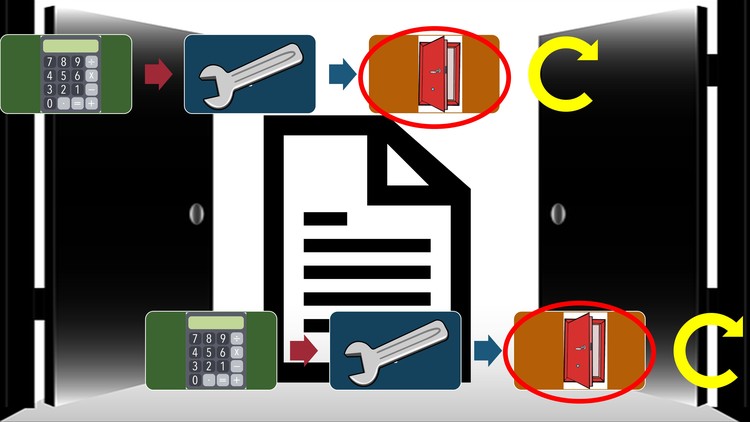
Closing processes including three formats of the closing process helping us better understand accounting concepts
What you will learn
Describe the closing process and its importance
Perform closing process using one journal entry
Perform closing process using two journal entries
Perform closing process using three journal entries
Describe the post closing trial balance
Define temporary accounts and permanent accounts
Understand fundamentals of Excel
Description
The financial accounting closing process is the final step in
the accounting cycle. We will learn why the closing process in needed and be
able to perform the closing process multiple ways.
In addition to instructional
video, this course will include downloadable
• Downloadable
PDF Files
• Excel
Practice Files
• Multiple
Choice Practice Questions
• Short
Calculation Practice Questions
• Discussion
Questions
The PDF files allow us to
download reference information we can use offline and as a guide to help us
work through the material.
Excel practice files will be
preformatted so that we can focus on the adjusting process and learning some of
the basics of Excel, like addition, subtraction, and cell relationships.
Multiple choice example question
helps us improve our test-taking skills by reducing the information into the
size and format of multiple choice questions and discussing how to approach
these questions.
Short calculation questions help
us reduce problems that have some calculation down to a short format that could
be used in multiple choice questions.
Discussion Question will provide
an opportunity to discuss these topics with the instructor and other students,
a process many students find very helpful because it allows us to see the topic
from different viewpoints.
Who will we be learning from?
You will be learning from
somebody who has technical experience in accounting concepts and in accounting
software like QuickBooks, as well as experience teaching and putting together
curriculum.
You will be learning from
somebody who is a:
• CPA –
Certified Public Accountant
• CGMA –
Chartered Global Management Accountant
• Master of
Science in Taxation
• CPS –
Certifies Post-Secondary Instructor
• Curriculum
Development Export
As a practicing CPA the
instructor has worked with many technical accounting issues and helped work
through them and discuss them with clients of all levels.
As a CPS and professor, the
instructor has taught many accounting classes and worked with many students in
the fields of accounting, business, and business applications.
The instructor also has a lot of
experience designing courses and learning how students learn best and how to
help students achieve their objectives. Experience designing technical courses
has also benefit in being able to design a course in a logical fashion and deal
with problems related to technical topics and the use of software like
QuickBooks Pro.
The topic will be the financial
accounting closing process.
As indicated by the title, the closing process takes place at
the end of the accounting cycle. The main event of the accounting cycle is the
financial statements. Once we have completed the financial statements we need
to get ready for the next accounting period, get ready with the closing
process.
The closing process will zero out temporary accounts including income
statement accounts of revenue and expenses and the draws or dividends account.
We can perform the closing process multiple ways. We will
consider the closing process from three perspectives. Each perspective has pros
and cons and the repetition of each method as well as performing the closing
process from multiple angles will provide a solid understanding of the concepts.
Understanding the closing process helps understand the concept
of temporary accounts and permanent accounts, which helps us understand the relationship
of the financial statements and how to read them.
Please join us for Financial Accounting, Adjusting Entries &
Financial Statements.
It will be great.
CPE Continuing Professional Education
Learning Objectives
1. List the components of the accounting cycle and identify where the closing process fits into it.
2. Explain the objectives of the closing process.
3. Describe the impact of the closing process on the balance sheet.
4. Discuss the impact of the closing process on the income statement.
5. Define temporary and permanent accounts.
6. List temporary and permanent accounts.
7. Explain how the closing process impacts temporary and permanent accounts.
8. Define a post-closing trial balance.
9. List the differences between a post-closing trial balance and an adjusted trial balance.
10. Explain how the closing process can be done in one step.
11. List the steps of a two-step closing process and explain how each step is done.
12. List the steps of a four-step closing process and explain how each step is done.
For additional information, including refunds and complaints, please see Udemy Terms of Use, which is linked from the footer of this page.
For more information regarding administrative policies, please contact our support using the Help and Support link at the bottom of this page.
Content